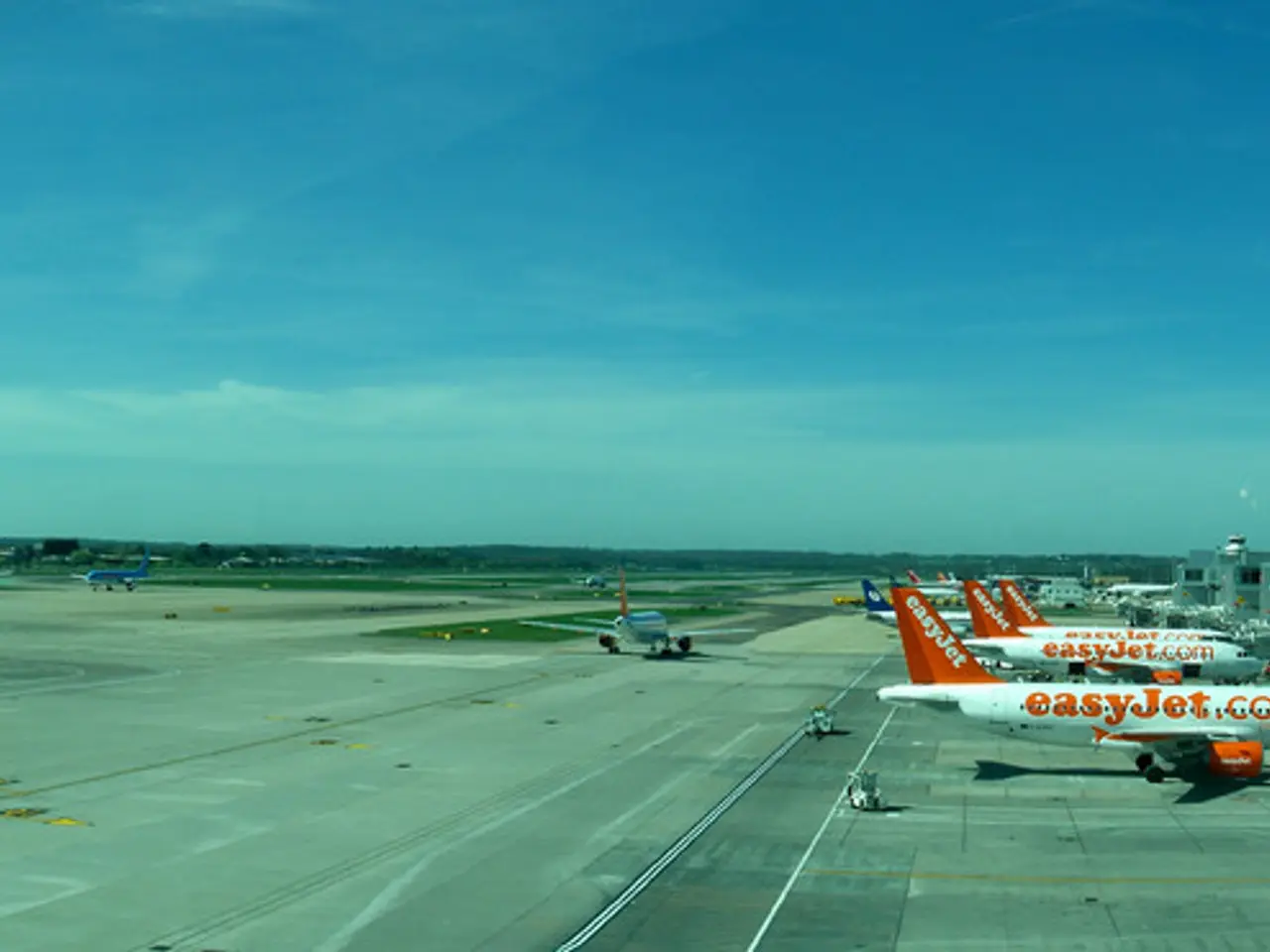Stuttgart Airport's financial reports remain in the negative
Stuttgart Airport Faces Challenges in Financial Recovery
Stuttgart Airport, a key regional hub in Germany, is navigating a difficult financial landscape as it strives to modernize and expand its infrastructure. The airport industry worldwide is under pressure, with Stuttgart Airport facing rising costs for personnel, energy, and materials, limited revenues due to the slow increase in passenger numbers, and government regulation, high fees, and high fuel prices.
The financial struggles of Stuttgart Airport are evident in the soaring debt, with the airport's debt skyrocketing into the hundreds of millions. In the fiscal year 2020, the airport recorded a significant drop in passenger numbers and a loss of around 97 million euros. The Stuttgart Airport GmbH (FSG) recorded a deficit of 6.1 million euros in the fiscal year 2024.
However, there is a glimmer of hope. The earnings before interest, taxes, depreciation, and amortization (EBITDA) for the fiscal year 2024 was significantly positive at 26.1 million euros. The number of passengers increased to 9.1 million passengers, an increase of 8.5 percent over the previous year. There were 94,177 aircraft movements (an increase of 2.3 percent) in the fiscal year 2024.
The airport's co-CEO, Carsten Poralla, has announced that tenders and awards for the energy renovation of terminals and buildings on the campus will begin in 2024. This forms part of the airport's climate strategy "STRzero", which aims to achieve "net-zero greenhouse gas emissions" by 2040. More than two billion euros will be invested in this project, including in further photovoltaic systems.
The airport CEOs hope for a reduction in air traffic tax, which they believe would be a boost for the industry. The airport expects to raise money on the capital market for the future project. The airport also plans to receive a capital contribution of 690 million euros from its owners, the state and the city of Stuttgart, for the years 2028 to 2031.
The recovery of Stuttgart Airport is closely tied to the overall German aviation sector's revival, which currently lacks a concrete recovery roadmap or timeline due to ongoing challenges including political inaction and economic headwinds in key industries around Stuttgart. The German aviation industry currently has the lowest recovery rate in Europe compared to the downturns caused by Corona due to politically induced disadvantages of location.
Despite these challenges, the airport CEO, Ulrich Heppe, expects about five percent more passengers in the current fiscal year than in the previous year. He is optimistic about the potential tailwind from the Stuttgart 21 railway project, which is expected to improve the airport's transport connections and go into operation at the end of 2026.
References:
[1] Bundesverband der Deutschen Luftverkehrswirtschaft e.V. (BDL). (2021). BDL-Studie: Das deutsche Flughafenwesen nach der Corona-Pandemie. Retrieved from https://www.bdl.aero/fileadmin/user_upload/downloads/Studien/BDL-Studie_Flughafenwesen_nach_Corona_Pandemie.pdf
[2] Deutsche Flughafen AG. (2021). Deutsche Flughafen AG: Ergebnisse des Jahres 2020. Retrieved from https://www.deutsche-flughafen.com/en/investor-relations/financial-reports/financial-reports-archive/annual-reports/deutsche-flughafen-ag-ergebnisse-des-jahres-2020/
[3] Flughafen Stuttgart GmbH. (2021). Ergebnisse des Geschäftsjahres 2020. Retrieved from https://www.flughafen-stuttgart.de/fileadmin/user_upload/downloads/Presse/Pressemitteilungen/2021/Ergebnisse_des_Geschaeftsjahres_2020.pdf
The Stuttgart Airport, in its quest for modernization and expansion, has incorporated sustainability into its plans, launching the climate strategy "STRzero" aimed at achieving net-zero greenhouse gas emissions by 2040, which includes investment in renewable energy sources like photovoltaic systems. Despite the challenges in the sports industry (air travel), the airport CEO, Ulrich Heppe, anticipates a five percent increase in passenger numbers, potentially influenced by the Stuttgart 21 railway project's improved transport connections.








